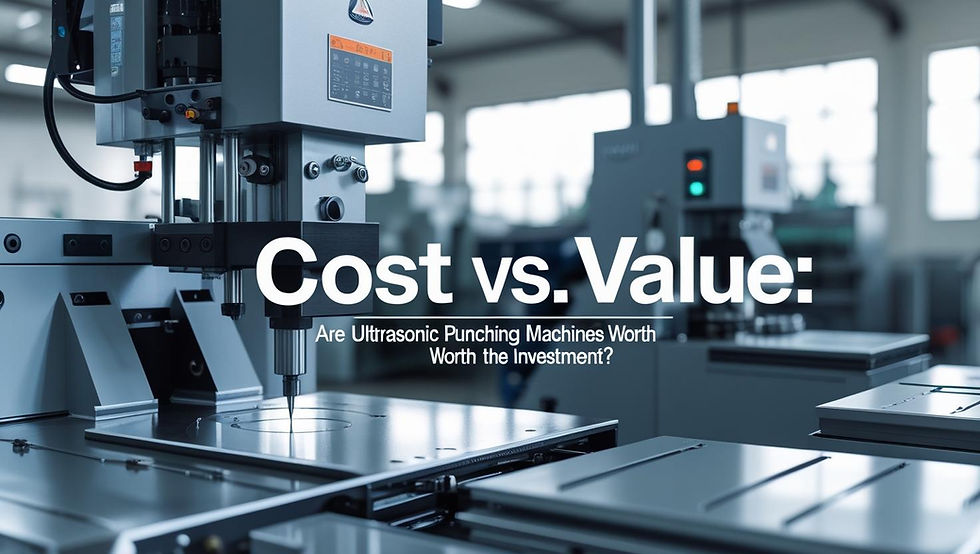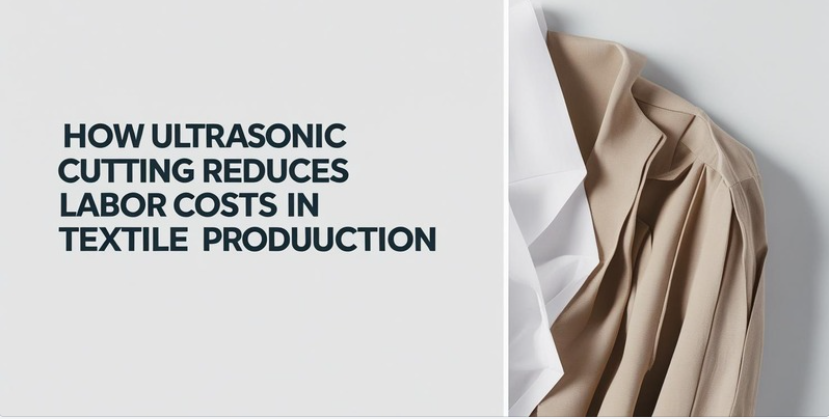Textile Manufacturing Trends in 2025: Automation, AI & Ultrasonic Cutting
- ztzgsteeltech
- Apr 16
- 4 min read

The Changing Fabric of the Textile Industry
If there's one thing that's clear in 2025, it's that the textile industry is evolving faster than ever before. From the rise of AI-driven automation to the increasing reliance on ultrasonic cutting machines, the way we manufacture textiles is undergoing a tech-driven transformation. As someone deeply immersed in the world of industrial textile machinery, I've witnessed firsthand how these technologies are reshaping production lines, improving quality, and reducing waste.
The Rise of Automation in Textile Manufacturing
Robotics on the Factory Floor
Textile factories in 2025 are no longer crowded with rows of manual laborers. Instead, you’ll find robotic arms assembling fabric patterns with speed and accuracy. These automated systems handle everything from yarn feeding to textile rolling, reducing human error and boosting efficiency.
Computer-Controlled Weaving and Knitting
Modern computerized weaving machines use real-time data to adjust patterns, tension, and thread density. It’s like having a digital loom operator who never sleeps. This precision results in consistent fabric quality and optimized material usage.
Predictive Maintenance with IoT
The integration of Internet of Things (IoT) sensors means that textile machinery can now "talk." Machines detect signs of wear, send alerts, and schedule maintenance before breakdowns occur—minimizing downtime and improving productivity.
Artificial Intelligence in Smart Textile Production
AI-Driven Quality Control Systems
Gone are the days of manual inspections. AI-powered vision systems now scan textiles for defects, color mismatches, and irregularities at a microscopic level. These systems learn from each error, making future inspections even sharper.
Data Analytics for Demand Forecasting
AI algorithms analyze consumer behavior, seasonal trends, and historical data to forecast demand accurately. This insight helps textile manufacturers reduce overproduction and maintain lean inventories.
Customization at Scale
With machine learning integrated into digital printing and pattern cutting, brands can now produce small batches of custom designs quickly. It's personalization without compromising scalability.
Ultrasonic Cutting Technology: Precision and Clean Edges
What Is Ultrasonic Cloth Cutting?
Ultrasonic cutting machines use high-frequency vibrations to cut fabric. The sound waves generate localized heat, which slices through textiles cleanly without fraying. It’s particularly effective for synthetic materials and multi-layered fabrics.
Why Ultrasonic Cutting Is the Future
Unlike traditional blade cutting, ultrasonic cloth cutting machines offer:
No fraying or unraveling
Cleaner edges
Faster throughput
Less material waste
This method is ideal for applications like medical textiles, automotive upholstery, and industrial uniforms.
Spotlight on China’s Ultrasonic Cloth Cutting Machines
China has become a global hub for ultrasonic textile machinery. A China ultrasonic cloth cutting machine offers not just affordability but also innovation, often integrating AI for real-time calibration and adjustment. Brands around the world trust Chinese manufacturers for high-precision textile solutions.
Sustainability and Eco-Friendly Innovations
Energy-Efficient Machines
New-gen textile equipment consumes significantly less power. Eco-mode ultrasonic machines, for instance, optimize energy output based on fabric density, lowering the carbon footprint.
Waterless Dyeing and Printing
Sustainable printing methods like digital sublimation printing reduce water use by up to 90%. Combined with AI-controlled dye dispensers, these methods are becoming the standard in eco-conscious textile manufacturing.
Recyclable and Biodegradable Fabrics
Manufacturers are now integrating AI to sort post-consumer textile waste, reprocessing it into reusable yarns. Biodegradable fibers like Tencel and organic cotton blends are also becoming more mainstream.
Choosing the Right Ultrasonic Cutting Machine Supplier
What to Look for in a Supplier
When choosing a China ultrasonic cloth cutting machine supplier, consider:
Experience in the field
After-sales support and training
Certifications (like CE and ISO)
Ability to customize machines for your operations
Verifying Certifications
Look for globally recognized certifications to ensure the machine complies with safety and performance standards. CE, RoHS, and ISO certifications are non-negotiable.
Why ZrinTech?
If you're looking for a reliable source for ultrasonic cutting technology, ZrinTech offers machines designed for precision, durability, and global compliance. We support textile innovation with top-tier customer service and machine training.
The Human Touch: Workforce in the Age of Automation
Upskilling and Reskilling
Even with automation, the human element remains vital. Workers are now trained to operate and troubleshoot smart machines, shifting from manual labor to tech-oriented roles.
Digital Twin Technology
Operators are learning to work with digital twin models—virtual replicas of machinery that help predict failures, optimize production, and train new staff in simulated environments.
Future-Proofing Textile Manufacturing: What’s Next?
Integration with Blockchain for Supply Chain Transparency
Blockchain is making waves in textile sourcing by allowing brands to trace every fiber from origin to retail shelf. This increases transparency and builds consumer trust.
Smart Textiles and Wearables
Think fabrics that monitor body temperature, adjust breathability, or even charge your phone. AI and ultrasonic machinery are enabling the production of these futuristic garments.
Global Collaboration and Standardization
Increased collaboration between international manufacturers is leading to standardized machinery protocols, making global integration more seamless and boosting machine interoperability.
Frequently Asked Questions (FAQs)
What is an ultrasonic cloth cutting machine?
Ultrasonic cloth cutting machines use high-frequency sound waves to slice fabric cleanly without fraying or scorching, especially useful for synthetic and technical textiles.
Why are ultrasonic machines better than traditional textile cutters?
They offer higher precision, cleaner cuts, reduced maintenance, and are more energy-efficient in the long run.
Are Chinese ultrasonic cutting machines reliable?
Yes. Many Chinese manufacturers now meet global quality standards, offering CE-certified, ISO-compliant equipment at competitive pricing.
Can ultrasonic machines handle all types of fabric?
They perform best on synthetic materials but can be calibrated to handle various types of woven and non-woven fabrics.
How do AI and IoT improve textile manufacturing?
AI enables smarter quality checks, demand forecasting, and process automation, while IoT sensors facilitate predictive maintenance and real-time data analytics.
Are ultrasonic cutters eco-friendly?
Yes, they produce less waste, require less maintenance, and reduce the need for blade replacements, aligning well with sustainable manufacturing goals.
What safety certifications should I look for in ultrasonic machines?
Key certifications include CE, RoHS, and ISO 9001, which ensure quality, safety, and environmental compliance.
Conclusion: Embracing the Smart Textile Revolution
From automated robotic looms to AI-powered ultrasonic fabric cutters, the textile industry in 2025 is not just evolving—it’s thriving through innovation. As manufacturers, we need to keep pace with these advancements, not only to stay competitive but to also meet the global demand for faster, cleaner, and more sustainable fabric production.
When it comes to sourcing reliable, high-precision machines like the China ultrasonic cloth cutting machine, aligning with a trusted supplier can make all the difference in your operational success.



Comments